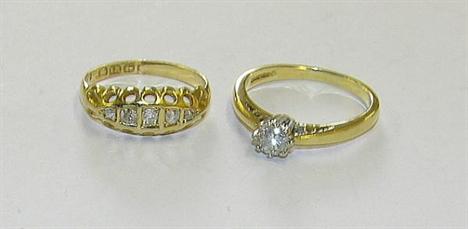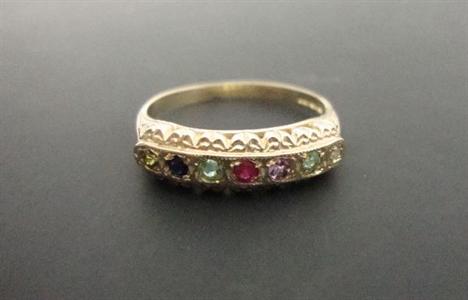We found 400830 price guide item(s) matching your search
There are 400830 lots that match your search criteria. Subscribe now to get instant access to the full price guide service.
Click here to subscribe- List
- Grid
-
400830 item(s)/page
ROERICH, NICHOLAS 1874-1947 Sangacheling, from the series Sikkim signed with a monogram Tempera on canvas, 73 by 117.5 cm. Provenance: The Roerich Museum, New York, 1924–1935. Nettie & Louis Horch, USA, from 1935. Private collection, UK. Exhibited: The Roerich Museum, New York (permanent collection), 1924–1935, No. 179. Literature: F. Grant et al., Roerich. Himalayas. A Monograph, New York, Brentano Publ., 1926, p. 199, 191, illustrated. The Roerich Museum Catalogue, New York, Roerich Museum, 1930, p. 21. A. V. Yaremenko, Nicholai Konstantinovich Roerich: His Life and Creations During the Past Forty Years, New York, Central Book Trading Co., 1931, p. 38, plate 91, illustrated. Y. Petrova, A Time to Gather. Russian Art from Foreign Private Collections, 2007, p. 125, No. 80, illustrated. List of Nicholas Roerich Paintings, 1917–1924, Autograph, The Nicholas Roerich Museum Archive, New York, No. 19. If one would attempt to divide Nicholas Roerich’s long artistic career into two main periods, the year 1924 would be a distinct and recognizable borderline. He spent the first nine months of that year living in Darjeeling, India, travelling throughout the region and painting his visions of spiritual forces shaping the material world: Himalayan landscapes, villages and monasteries. He expressed his fascination with “the roof of the World” (the Himalayas) and India’s ageless spiritual traditions by instantly acquiring a new style of painting marked by richness of colour, forcefulness of line, and freshness of perspective. His eighty canvases from this period, neatly organized into four series – His Country, Sikkim, Banners of the East (The Birth of Mysteries) and Himalayan – all bear the signs of that particular vigor and spontaneity which comes with leaving behind old shores and discovering new inspirations. If we had to define Roerich with just a painting or two, it would almost certainly come from 1924. In this large canvas from the Sikkim series, consisting of thirteen paintings in all, Roerich pays tribute to Buddhist lore by depicting one of the oldest and well-known of its monasteries (of Nyingma tradition) near the village of Pelling. In his travel diary he notes: “An interesting monastery is Sangacheling… there are no relics, but there rests a stone made sacred by the blessing of the founder; when the life of the monastery is unalloyed, the stone is firm, but each deviation makes the stone creak.” As always in his work, the artist is motivated by the spiritual significance of the subject. His meditation on the theme produces a bold composition: a small human figure balances the vast expanses of brick and stone. For Roerich, it is not outward greatness that determines whether faith endures, but rather the firmness of human spirit. Here, the rock and stupas are held together by the strength of the monk’s will. Without him, the composition collapses; if his spirit cracks, the stone breaks. The clarity of Roerich’s new vision is manifest in the sharp outlines of the rocks, stupas, and almost geometric simplicity of the figure. By contrast, a glowing, yellow light, a symbolic colour in Buddhism, permeates every inch of the canvas, alternating between flat planes of colour and rough textures of dark orange. The richness of colour and the complexity of composition do not detract from the powerful presence of the solitary figure. In fact, they emphasize the strength of his spirit, as he both harmonizes with and commands his surroundings. We are grateful to Gvido Trepša, senior researcher at the Nicholas RoerichMuseum, New York, for providing this note. Nicholas Roerich had felt strongly drawn to India from as far back as his childhood: when he passed the summer on the estate of Izvara near Gatchina, where he would spend hours gazing at a painting hanging on the wall that had as its subject the celebrated Himalayan mountain peak of Kanchenjungi, and on the occasions when he would sit listening to the conversations of the orientalists A. Pozdneev and K. Golstunskiy when they visited the Roerich family home in St Petersburg. At last, on 17 November 1923, the Macedonia steamship departed from Marseilles harbour for Bombay, with Roerich and his family aboard. They did not remain on the Indian plain for long. The destination for which they were bound was where the snow-covered peaks of the highest mountains in the world soared to the heavens – the Himalayas. After having made their way through a noisy and hot Calcutta, Roerich and his family arrived in Darjeeling. This small English resort town, the centre of the tea industry, lies in the foothills of the Eastern Himalayas. In close proximity to Darjeeling, to the north, there was the small Himalayan principality of Sikkim, nestling between Nepal and Bhutan. On fine clear days, the gigantic snowy mass of the sacred peak of Kanchenjungi could be seen to rear above it. This “snowy country, the outlines of which vary with each change of light ... this eternally turbulent restless ocean of clouds and indescribably diverse varieties of mists” inspired Roerich to create his first major cycle of works dedicated to the Himalayas. One of the masterpieces of the Sikkim series, which consists of a total of thirteen canvases, is the arge canvas now being presented at auction, Sangacheling. The lost Himalayan independent principality of Sikkim, to which access had only just been granted to Europeans, became the first stage of the expedition route. The principality presented a unique image both in terms of nature and from a cultural perspective. Arranged on a multitude of hills, from time to time one would come across evergreen jungles with luxuriant vegetation, pheasants, leopards and monkeys. Over all of this world filled with the splendours of nature there soared the seventeen snow-capped peaks of the Himalayas. The small area within which Sikkim was contained also encompassed almost every climatic zone our planet has to offer, beginning with a subtropical zone and ending with an arctic zone of eternal snows. “A diverse natural world”, Roerich wrote of Sikkim, “a stern larch tree would stand side by side with a rhododendron bush. Everything crowded together, and all these earthly riches faded into the blue mist of the mountainous distance. A bank of clouds covered a glowering haze. It was strange and strikingly unexpected to catch sight of a new cloud-filled composition after having viewed this finished piece of artwork. Above the dusk and waves of clouds there shone the blindingly bright snows of the endless, soaring, almost inaccessible peaks. These were two separate worlds, divided by mist”. The precipitous mountains of the “land of snow” precluded the use of horses, and therefore the route through this country followed by Roerich and his family had be undertaken on foot and was extremely arduous. They made a study of historical and religious monuments and, most importantly, the ancient monasteries of Sikkim – “the hundred monasteries of Sikkim. Probably considerably more in fact. Each of them sitting astride a peak”. Amongst this multitude of holy sites, along the expedition route there was to be found one of the oldest and most revered of the country’s monasteries, the monastery of Sangacheling, which was situated next to the settlement of Pelling. Founded in 1705, the monastery adhered to the Nyingma tradition, which is the most ancient of the four principal schools of Tibetan Buddhism. At this time Roeric
-
400830 item(s)/page










































